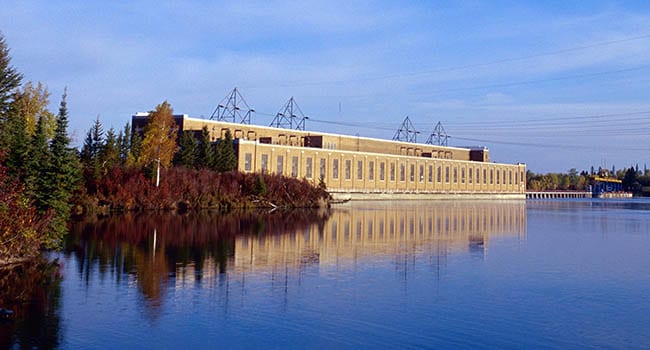 The world’s economy continues to grow every year by between two and four per cent. From when civilization began 5,000 years ago, the production of energy remains an important factor to continued growth.
The world’s economy continues to grow every year by between two and four per cent. From when civilization began 5,000 years ago, the production of energy remains an important factor to continued growth.
In these environmentally conscious times, efforts are intensifying to reduce energy consumption and switch to renewable resources. Manitoba is in a very unique situation – requiring unique solutions – being one of the world’s few jurisdictions producing all of its electricity from renewable sources.
Manitoba Hydro produces significant surpluses of electricity, exporting the surplus mostly to the United States, to reduce their fossil fuel production of electricity.
When the under-construction Keeyask dam is completed, Manitoba will have an additional 700 megawatts of electricity not now required for domestic consumption. For the foreseeable future, all of it will be exported to the U.S. Unfortunately, the export market yields between one and three cents per kilowatt for opportunity sales versus the 13 cents cost of the dam and accompanying transmission.
The difference will need to be made up by what is effectively a subsidy by Manitoba Hydro’s domestic ratepayers, who face higher domestic rates to pay for the unprofitable surplus production capacity.
One alternate option is to develop more uses for domestic consumption. Unfortunately, the thrust of Manitoba Hydro’s marketing efforts has been to reduce domestic consumption, resulting in increased surpluses that need to be sold in export markets. This made sense when export prices were profitable, but export prices have tumbled because of declining American domestic prices from the falling cost of U.S. wind and solar renewable generation, backed up by low-cost gas-fired generators and batteries. No change in this dynamic is expected in the future.
To reduce a future electricity rate shock, Manitoba Hydro should look for ways to increase domestic demand by displacing non-renewable energy consumption. Things like electric cars and buses are obvious targets to pursue. But one of the oddities of the Manitoba Hydro Act is that it doesn’t allow for the purchase and resale of electricity. All electricity must be sold directly by the monopoly Manitoba Hydro.
An unexpected consequence of this restrictive law is that it’s virtually impossible for those living in multifamily buildings (condos or rental) to have access to individual charging stations for electric and plug-in hybrid cars.
For Manitoba Hydro to sell power directly, it must have a meter directly from its feed to the charging station. This means that if you own a condominium or rent in a high rise, Manitoba Hydro must run new lines from its power supply directly to your charging station.
Given that the power used represents only a dollar or two a day, this is entirely uneconomic. No residential multifamily dwelling in Manitoba would ever go to this expense. Approximately 300,000 people in Winnipeg live in multifamily dwellings – all now unable to take advantage of the increasing benefit of electric and plug-in vehicles.
A simple solution would be for Manitoba Hydro to allow for sub-metering at low voltage (120 or 240 volts). This would have the building manager installing inexpensive sub-meters at individual charging stations and collect the money for Manitoba Hydro. While building managers would expect some benefit for their service, the fee could be stipulated in revised legislation to ensure the end user wasn’t paying substantially above market prices for this service.
The cost benefit of low voltage with preferential night rate charging sub-metering is substantial compared to running a line for tens of thousands of dollars to each charging station. In order to accomplish what would be a relatively simple fix, the Manitoba Hydro Act would need to be amended. The move wouldn’t cost a penny of public money nor would a subsidy be required.
There are likely other ways of using Manitoba Hydro to offset fossil fuel consumption and reduce the unprofitable export of excess electricity. The mandate of the newly formed Efficiency Manitoba should include such objectives.
Efficiency Manitoba’s primary focus should be how to use Manitoba Hydro’s renewable energy to offset non-renewable energy?
No doubt there are lots of other opportunities but sub-metering would be a good first start.
Randy Boldt is a research associate at the Frontier Centre for Public Policy.
Randy is a Troy Media Thought Leader. Why aren’t you?
The views, opinions and positions expressed by columnists and contributors are the author’s alone. They do not inherently or expressly reflect the views, opinions and/or positions of our publication.


